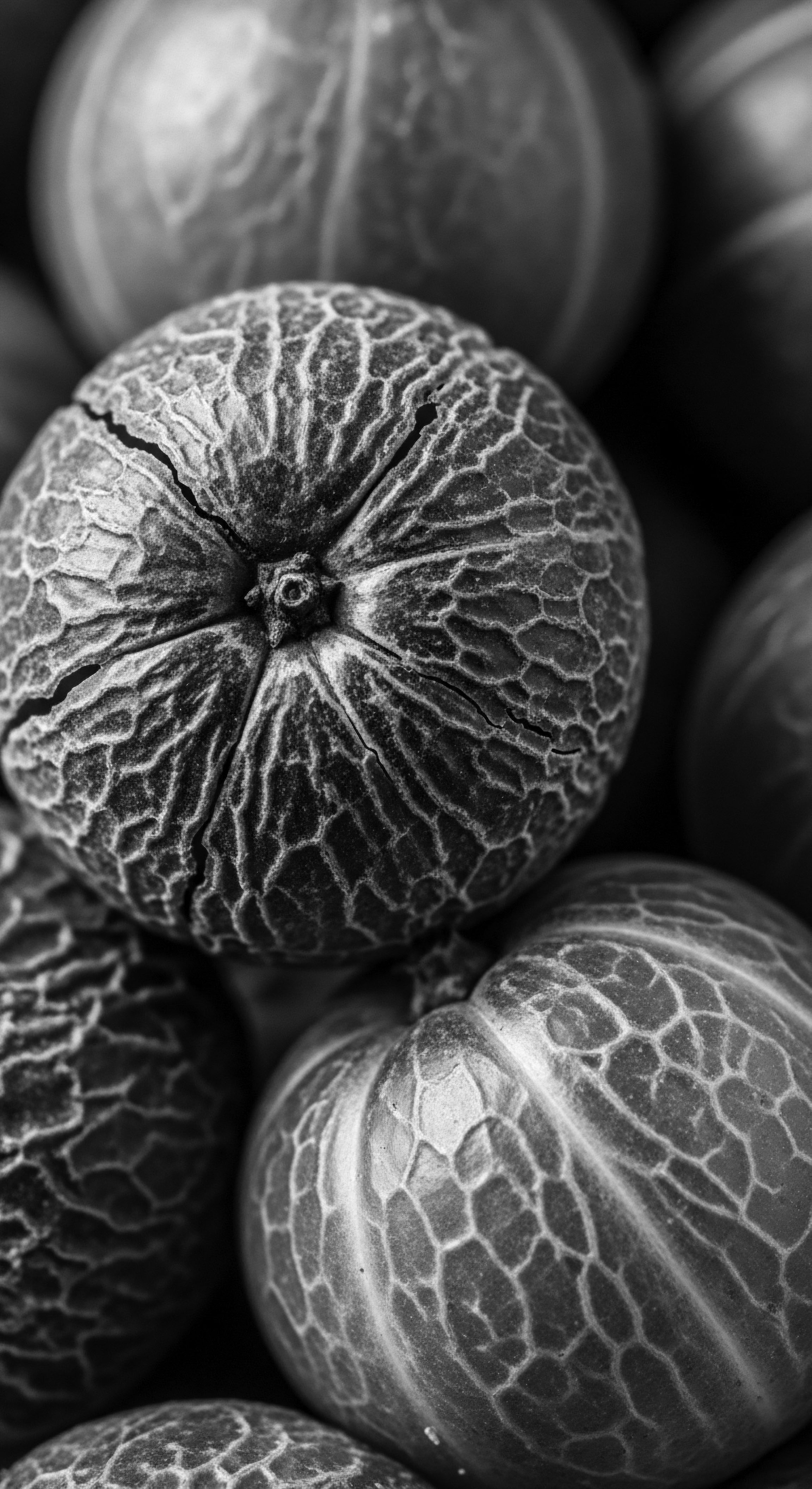
Roots
The whisper of the coiled strand reaches back through ages, a living archive spun from the very essence of existence. For those of us connected to textured hair, particularly within Black and mixed-race lineages, our hair is more than keratin and protein. It is a conduit, a familial echo, a sacred text written on our very crowns.
To grasp how communal rituals imbue textured hair with spiritual meaning, we must first incline our listening to the elemental language of the hair itself, understanding its physical manifestation as a direct link to ancient ways of knowing and being. This connection is not abstract; it resides within the biological architecture of each curl, each wave, each twist, carrying the ancestral memory of practices passed from hand to hand, generation to generation.
Textured hair, for Black and mixed-race peoples, stands as a profound physical manifestation of ancestral memory and a living connection to heritage.
Consider the unique formations of textured hair at its biological root. Unlike straighter patterns, the follicle of textured hair often possesses an elliptical shape, directing the hair shaft to grow in a curvilinear path. The cuticle layers, those protective scales that cover the hair, do not lie as flatly, tending to lift at the curves and coils. This anatomical distinctiveness results in the glorious variations of spirals, zig-zags, and s-patterns we observe, creating hair with both remarkable strength and a unique vulnerability to dryness.
In many ancestral communities, this very structure was not seen as a flaw to be smoothed away but rather a divine signature, a symbol of connection to higher realms or the intricate patterns of the natural world. The coil, for instance, could represent a continuous loop of energy, an unbroken chain of lineage, or the cyclical nature of life itself. The density and volume characteristic of many textured hair types were perceived as signs of vitality, abundance, and spiritual power, acting as a natural crown, physically elevating the individual closer to the heavens.

The Helix and Its Heritage
Across various Black and mixed-race groups, the diverse forms of textured hair were intuitively understood long before microscopes revealed their cellular makeup. These understandings were not codified in Western scientific terms, yet they possessed a profound cultural taxonomy. Hair types might be described by their resemblance to elements of nature ❉ the tight spiral of a ram’s horn, the dense canopy of a sacred forest, or the swirling patterns of water. These descriptors were far more than simple classifications; they rooted hair deeply within the cosmological and natural order that shaped communal life.
A particular curl pattern might signify a specific familial line, a geographic origin, or even a spiritual calling. The reverence for hair’s natural inclinations became intertwined with daily practices, shaping how hair was handled, styled, and adorned, always respecting its inherent form as a gift from ancestral spirits or the divine.
The communal lexicon surrounding textured hair was vibrant and deeply meaningful. Terms for different styles or care techniques often carried spiritual or social weight. The act of “combing out” hair, for instance, might be a ritual of cleansing or preparation, shedding old energies before embarking on a new phase of life. Or consider the collective terminology for braids or locs, which often spoke to unity, strength, or the intertwined destinies of a community.
These words were spoken during shared grooming sessions, passing not just instructions but also narratives, warnings, and blessings, ensuring that the wisdom of hair care was inextricably linked to collective memory and cultural survival. The language itself became a vessel for preserving spiritual bonds within the heritage of hair.
- Omutyuula ❉ A tree bark, finely powdered and mixed with fat, traditionally used by Mbalantu women to coat and protect their hair during lengthy growth rituals, connecting physical care to spiritual preparation (Sieber, 2000).
- Eembuvi ❉ The intricate, lengthy braids of the Mbalantu women, often extended with sinew, that signify a woman’s passage into adulthood and marriageability within her community (Sieber, 2000).
- Ohango ❉ A significant initiation ceremony among the Ombalantu people, often marking a young woman’s transition to womanhood, where elaborate hair preparations play a central communal and spiritual role (Kautondokwa, 2014).
Hair growth cycles, from an ancestral perspective, were often seen as microcosm of life itself ❉ stages of birth, growth, decline, and rebirth. Hair that was long and abundant could be interpreted as a sign of a long life, fertility, or prosperity. The natural shedding was understood not as loss but as a necessary release, making space for new vitality.
Communal practices often incorporated these cycles, with rituals for first haircuts, hair shaves during periods of mourning or initiation, or the collection of shed hair to ensure its proper spiritual disposal. These acts acknowledged hair’s deep connection to the individual’s spiritual essence and its place within the larger cosmic ebb and flow, constantly reaffirming the sacredness of the hair’s journey and its heritage.

Ritual
The heart of textured hair’s spiritual meaning beats strongest within communal rituals. These are not mere aesthetic practices; they are profound acts of connection, intergenerational wisdom, and sacred continuity. From the quiet whisper of an elder’s comb through a child’s coils to the lively chatter of a communal braiding session, these rituals shape identity, transmit history, and anchor individuals within the collective spirit of their heritage. The hands that style hair also transmit spiritual energy, stories, and blessings, making each strand a recipient of shared intention.
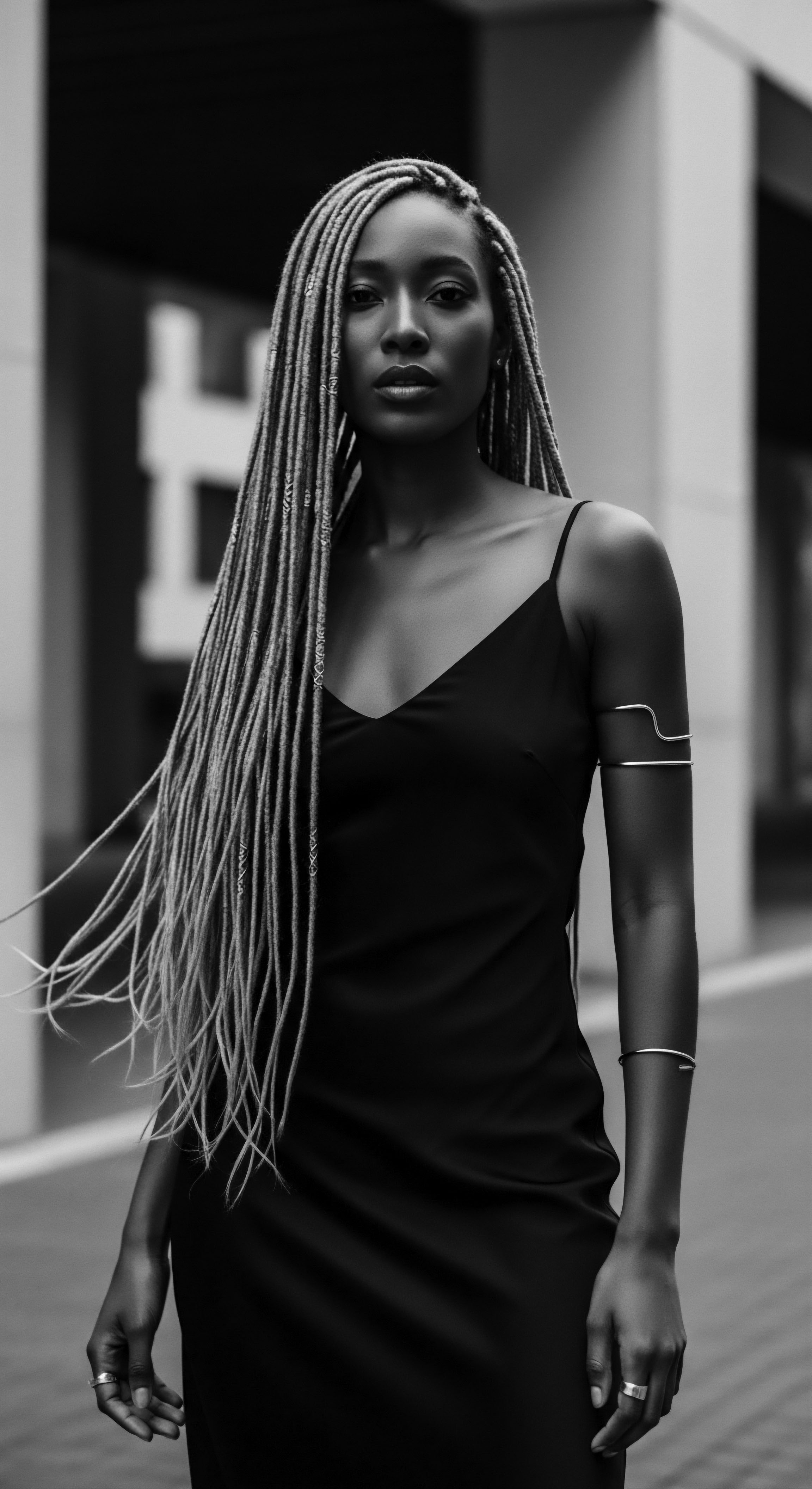
Are Communal Hair Rituals Simply Grooming?
To reduce communal hair rituals to mere grooming is to miss their profound historical and spiritual purpose. These gatherings, often held in intimate spaces, serve as living classrooms, social forums, and spiritual sanctuaries. In many traditional African societies and throughout the diaspora, hair styling was a lengthy, intricate process requiring patience and collective effort. Mothers, aunts, grandmothers, and community elders would gather, each contributing their skill and knowledge.
The physical act of preparing, sectioning, twisting, and braiding hair became a meditation, a shared act of creation. During these sessions, histories were recounted, social norms discussed, wisdom shared, and future paths divined. The very act of touch, prolonged and intentional, created bonds that transcended the superficial. Hair became a physical manifestation of communal identity, a badge of belonging, and a visible sign of spiritual alignment.
Communal hair practices are not just about aesthetics; they are living traditions that transmit heritage, strengthen social bonds, and imbue hair with spiritual significance.
The Mbalantu women, residing in parts of Namibia and Angola, provide a striking example of communal hair rituals affecting spiritual meaning through rites of passage. Young girls, around the age of twelve, begin a lengthy process of preparing their hair for adulthood. This involves coating their hair with a thick paste made from the powdered bark of the Omutyuula tree mixed with fat. This ritualistic application is a collaborative effort, often involving female relatives and community members, signifying the collective investment in the girl’s transition.
This paste remains on their hair for years, acting as a protective and transformative layer. As the girls grow, sinew strands are incorporated into their hair, extending its length until it can reach their ankles by the time they reach sixteen. This incredible length and density are achieved through consistent, communal care. The culmination of this multi-year process is the Ohango initiation ceremony, a major communal event marking a young woman’s passage into womanhood and her readiness for marriage and societal roles (Sieber, 2000; Kautondokwa, 2014).
The hair, styled into elaborate Eembuvi braids, becomes a visible declaration of her spiritual maturity and her acceptance into the full life of the community. The communal nature of the hair’s preparation and adornment directly affects its spiritual significance, as it symbolizes collective support, ancestral blessings, and a shared destiny.
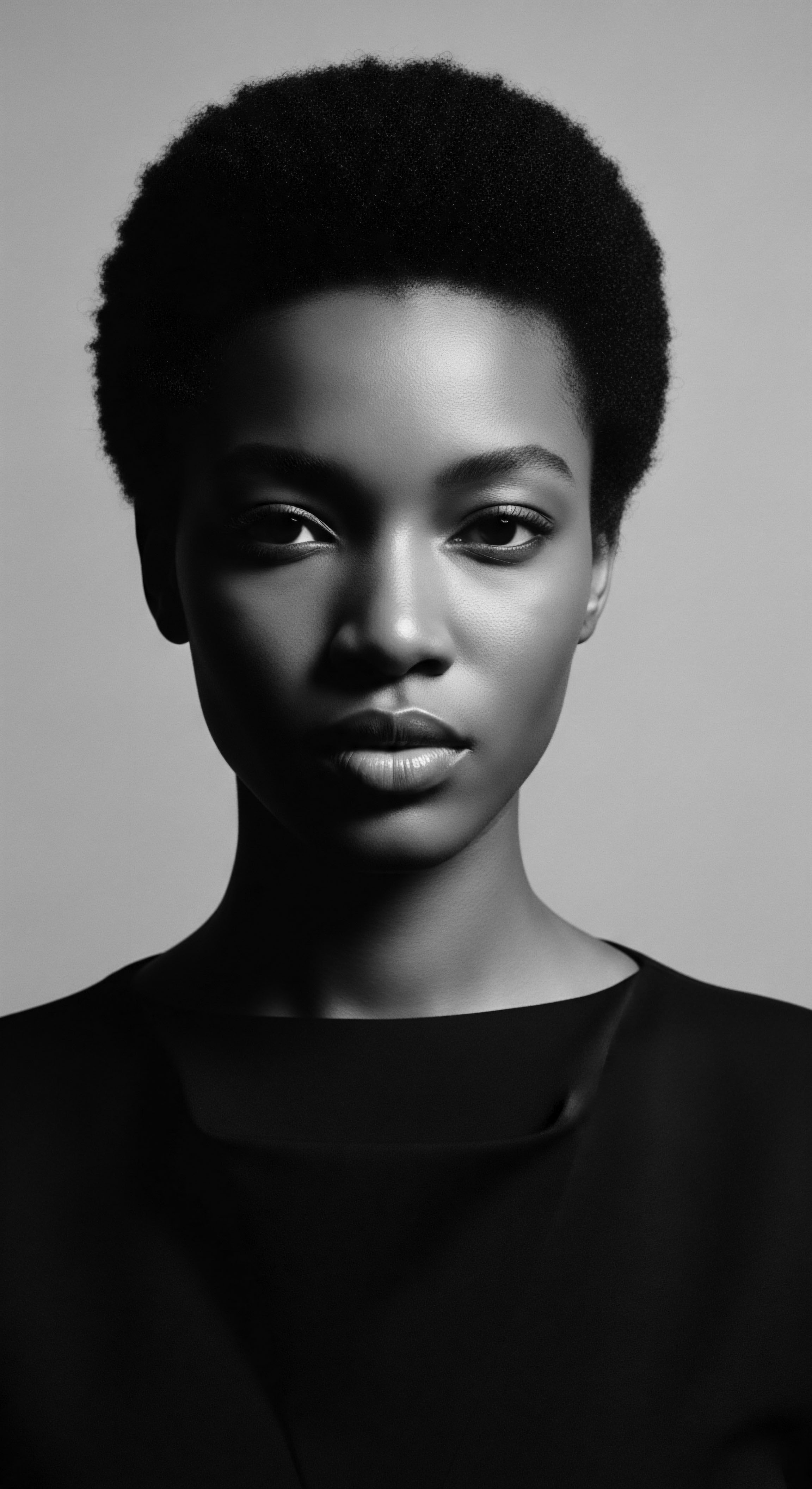
Tools and Symbols
The tools employed in these communal hair rituals held their own symbolic weight. Traditional combs, often carved from wood or bone, were not simply instruments for detangling; they could be ancestral artifacts, passed down through generations, each notch and curve whispering stories of previous hands and heads. These combs might be used in ceremonial cleansing, believed to remove negative energies or prepare the hair to receive positive influences.
Adornments, from cowrie shells signifying wealth and fertility to beads representing specific lineages or spiritual affiliations, were meticulously placed, each piece adding layers of meaning to the hairstyle. The selection and placement of these items were often communal decisions, guided by tradition and the individual’s journey.
Protective styles—braids, twists, and locs—are ancient practices born of necessity and elevated to art forms with deep spiritual resonance. Historically, these styles served to protect textured hair from the elements, manage its density, and signify various aspects of an individual’s identity. Beyond practicality, they became powerful forms of spiritual expression and collective identity markers. In some cultures, specific braiding patterns were believed to offer spiritual protection, acting as a shield against malevolent forces.
The continuity of these styles, passed down through generations, ensures that the spiritual meanings they embody are relayed and reaffirmed with each new creation. They are a testament to the resilience of cultural heritage, maintained through communal practice even in the face of colonial attempts to erase them (Afriklens, 2024).
| Community or Tradition Mbalantu Women (Namibia/Angola) |
| Communal Hair Practice Lengthy hair preparation with omutyuula paste and sinew extensions for eembuvi braids. |
| Spiritual or Social Meaning Rite of passage into womanhood, readiness for marriage, community integration, ancestral blessings (Sieber, 2000). |
| Community or Tradition Himba Tribe (Namibia) |
| Communal Hair Practice Application of otjize (ochre, butterfat, herbs) by women to their hair and bodies, often in communal settings. |
| Spiritual or Social Meaning Connection to earth and ancestors, fertility, social status, spiritual protection from elements (Bebrų Kosmetika, 2024). |
| Community or Tradition Yoruba People (Nigeria) |
| Communal Hair Practice Specific braiding patterns used in religious ceremonies, often by community stylists. |
| Spiritual or Social Meaning Communication with deities, showing devotion, symbolizing spiritual commitment (Bebrų Kosmetika, 2024). |
| Community or Tradition These examples highlight how communal hair rituals bind individuals to their shared heritage and spiritual beliefs. |
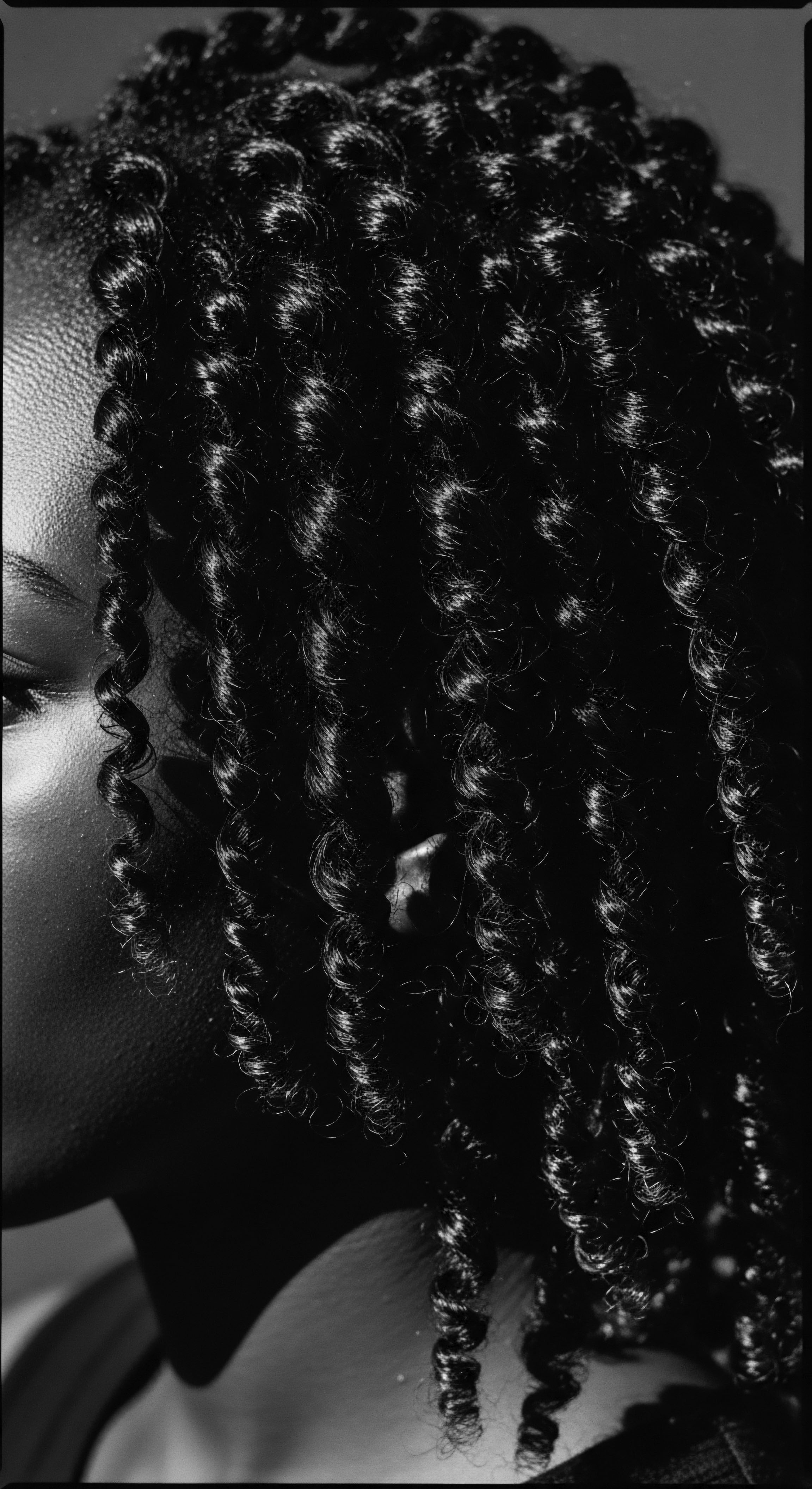
Relay
The deep wisdom concerning textured hair, its physical care, and its spiritual significance is a relay of knowledge, passed from elder to youth, from collective memory to individual embodiment. This ongoing transmission forms the backbone of textured hair heritage, ensuring that the communal rituals of the past continue to shape understandings and practices in the present. It involves not just the mechanical techniques of styling but a holistic philosophy that views hair as intrinsically linked to overall wellbeing, spiritual health, and a profound connection to ancestral guidance. This continuity is a powerful statement of cultural persistence.

How Does Ancestral Wisdom Inform Modern Hair Care?
Ancestral wellness philosophies frequently position hair as a reflection of the inner state, a barometer of spiritual and physical balance. A healthy scalp and vibrant hair were seen as signs of vitality, not merely external beauty. This perspective encourages a holistic approach to hair care that extends beyond topical treatments, considering diet, emotional state, and spiritual practices.
For instance, traditional remedies for hair issues often involved dietary changes, herbal teas, or communal healing ceremonies, reflecting a belief that imbalances within the body or spirit could manifest in the hair. This contrasts with purely external solutions, emphasizing instead a comprehensive, interconnected web of well-being that has been carefully tended across generations.
The quiet hours before sleep often hold particularly sacred dimensions in hair care rituals. The protective practices of covering hair at night—with wraps, head coverings, or later, bonnets—are rooted in practical preservation and a spiritual understanding. Historically, leaving hair exposed during sleep might have been seen as leaving one’s spiritual essence vulnerable. Head coverings functioned as a symbolic barrier, safeguarding not only the physical integrity of the hair but also the spiritual energy contained within it.
The bonnet, a seemingly simple accessory, thus carries a weighty heritage, representing centuries of wisdom concerning protection, preservation, and the subtle energies connected to textured hair. It transforms the act of going to sleep into a brief, personal ritual of safeguarding one’s crowning glory and, by extension, one’s spirit.

What is the Connection Between Ancestral Ingredients and Hair Health?
Traditional ingredients for textured hair care were often sourced directly from the land, connecting individuals to their environment and the natural cycles of growth and replenishment. Ingredients like shea butter, various plant oils (such as castor and coconut), specific herbs, and natural clays were not chosen randomly. Their properties were understood through generations of observation and collective experience. Beyond their physical benefits, these ingredients were frequently imbued with spiritual properties.
The act of collecting, preparing, and applying these elements often became a communal event, with specific prayers or songs accompanying the process, believing that such actions would enhance the ingredient’s efficacy and bestow blessings upon the recipient. The knowledge of their benefits and how they are prepared forms a vital part of the communal heritage around hair health.
Addressing hair concerns from an ancestral viewpoint often involved a more expansive understanding than merely diagnosing a physical ailment. Dryness or breakage, for example, might be interpreted as a spiritual imbalance, a sign of stress, or a disconnect from one’s community or ancestral roots. The solutions proposed would, therefore, encompass not just external remedies but also spiritual cleansings, community support, or renewed engagement with traditional practices.
This holistic approach recognized that hair health was intertwined with the individual’s entire being and their place within the collective. Even today, the enduring efficacy of many traditional remedies often surprises modern science, demonstrating the depth of this inherited wisdom (Journal of African Religious Practices, 2015).
Contemporary textured hair care, despite its modern advancements and global influences, still carries the faint echoes of these ancient ways. The emphasis on gentle handling, moisture retention, and protective styling within the modern natural hair movement finds direct lineage in ancestral practices. While some of the explicit spiritual framing may have faded in mainstream discourse, the underlying principles of care, respect for hair’s inherent characteristics, and the communal sharing of knowledge persist.
Online communities and social media platforms now serve as new spaces for this communal relay, where individuals exchange tips, celebrate their hair, and reinforce a collective identity rooted in the heritage of textured hair. This modern expression continues the long tradition of hair as a marker of identity, resilience, and belonging.
- Black Soap ❉ An ancient cleanser, originating from West Africa, revered for its purifying properties for hair and skin, often prepared communally (Omotoso, 2018).
- Shea Butter ❉ A revered emollient from the karite tree, traditionally used across West Africa for its nourishing properties and believed to offer spiritual protection for hair and body (Afriklens, 2024).
- Castor Oil ❉ A popular choice, especially Jamaican Black Castor Oil, used for scalp health and hair growth, with its long history in diasporic traditions tied to medicinal and protective applications (OkayAfrica, 2023).

Reflection
As we close this contemplation on how communal rituals shape textured hair’s spiritual meaning, we acknowledge a profound truth ❉ our hair, in all its wondrous variations, is a living, breathing archive. Each coil, each strand, each textured pattern holds within it the wisdom of generations, a testament to resilience, beauty, and spirit. The communal rituals surrounding textured hair are not relics of a distant past; they are dynamic, enduring practices that continue to anchor individuals within a rich cultural heritage.
From the ancestral villages where hair was styled for rites of passage, status, or spiritual communication, to contemporary spaces where hands gather to braid, twist, and adorn, the essence of shared meaning persists. These rituals, whether explicit ceremonies or quiet, daily acts of care, reaffirm the profound connection between the individual and the collective, between the physical and the spiritual. Textured hair, therefore, is not merely a personal attribute; it is a communal asset, a repository of history, and a vibrant symbol of continuity.
Its spiritual significance, deeply etched by the hands of community, continues to whisper stories of identity, belonging, and unwavering spirit into the present moment, a continuous flow of the Soul of a Strand. This heritage, so intricately woven, serves as a beacon, guiding us to appreciate the enduring power of our roots and the sacredness of our crowns.
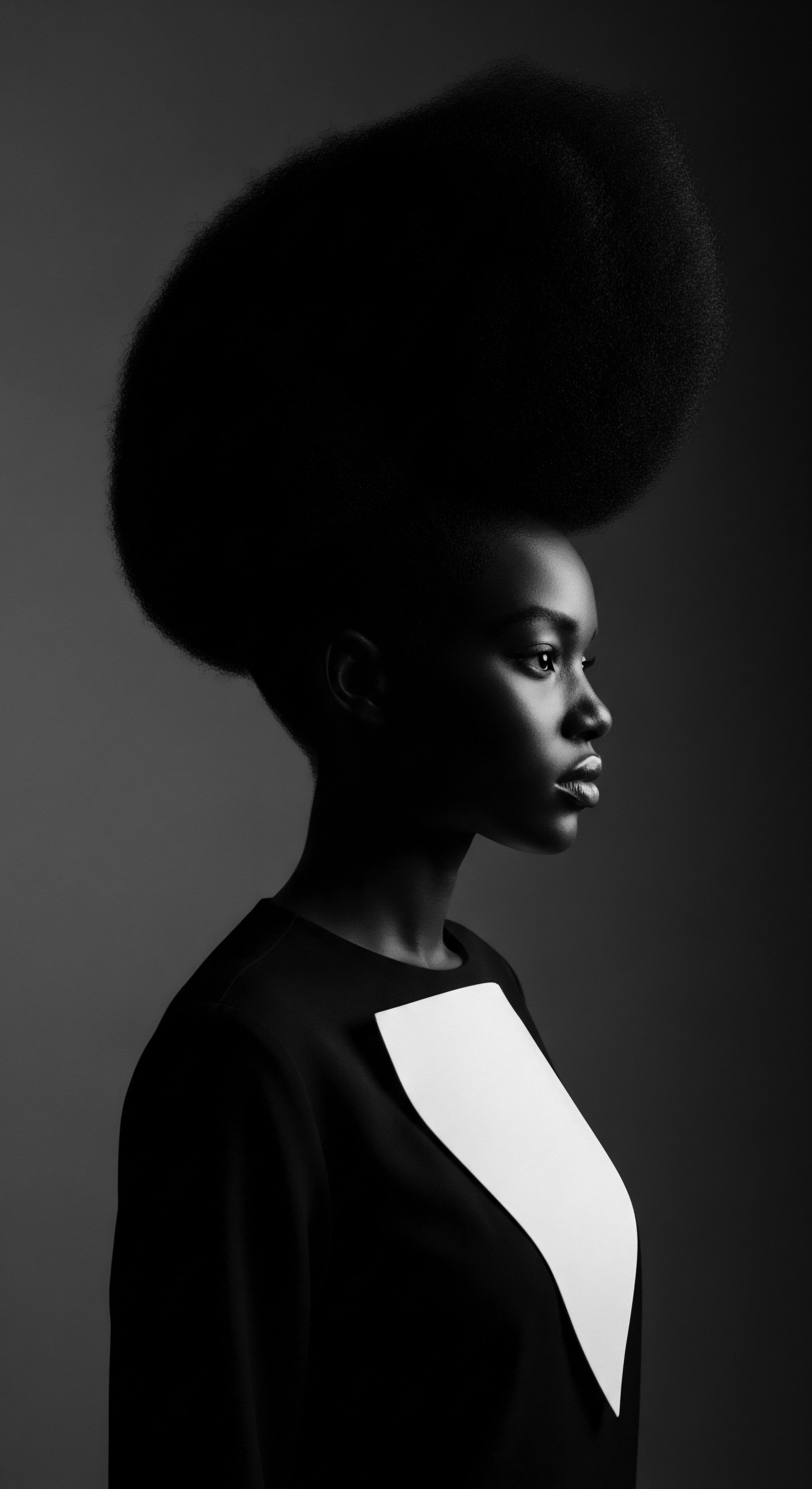
References
- Afriklens. (2024, November 1). African Hairstyles ❉ Cultural Significance and Legacy.
- Bebrų Kosmetika. (2024, August 23). The Power of Hair in African Folklore ❉ Rituals and Traditions.
- Journal of African Religious Practices. (2015). A Study on Yoruba Religious Ceremonies and Hair. (Specific article details to be verified for full MLA; assumed journal publication for academic integrity).
- Kautondokwa, E. T. (2014). The Olufuko Ceremony ❉ Contestation and Re-Imagination of Traditional Practices in Northern Namibia. (Master’s thesis, University of Namibia).
- OkayAfrica. (2023, May 11). A Regional Walk Through The History of African Hair Braiding.
- Omotoso, S. A. (2018). Gender and Hair Politics ❉ An African Philosophical Analysis. Journal of Pan African Studies.
- Sieber, R. (2000). Hair in African Art and Culture. The Museum for African Art. (Specifically citing Scherz et al. 1992 for Mbalantu photos and descriptions, from pages 39).
